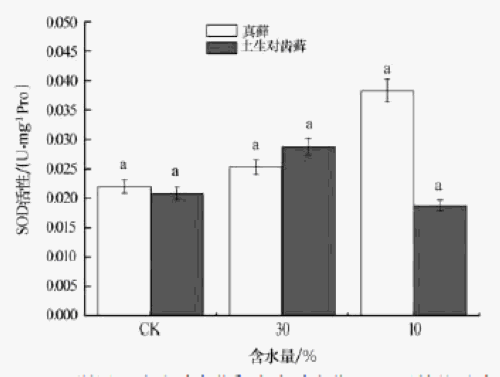Bryum argenteum and Didymodon vinealis are important components of sand-fixation biological soil crust in Shapotou region, south margin of Tengeer Desert. We studied the different reactive oxygen species (ROS) scavenging mechanisms of Bryum argenteum and Didymodon vinealis under gradual drought stress. Results showed that under gradual drought stress, Bryum argenteums H2O2 content increased slightly, its malondialdehyde (MDA) content decreased significantly and soluble protein content changed slightly. Bryum argenteum scavenged its ROS mainly by catalase (CAT) and supplemented by superoxide dismutase (SOD) under gradual drought stress, while its ascorbate peroxidase (APX) and peroxidase (POD) didn't function a lot. However, glutathione reductase (GR) and glutathione (GSH) of Bryum argenteum played roles only under moderate drought stress. Under gradual drought stress, both H2O2 and MDA contents of Didymodon vinealis increased significantly, while its soluble protein content decreased sharply. Didymodon vinealis scavenged its ROS mainly by GSH under gradual drought stress and supplemented by SOD and CAT, while its APX and GR didn't function a lot. However, its POD played a role only under moderate drought stress.

Effects of gradual drought stress on MDA contents in Bryum argenteum and Didymodon vineali

Effects of gradual drought stress on SOD activities of Bryum argenteum and Didymodon vineali

